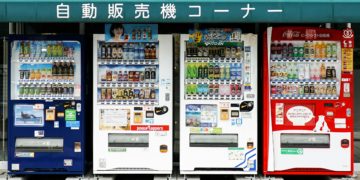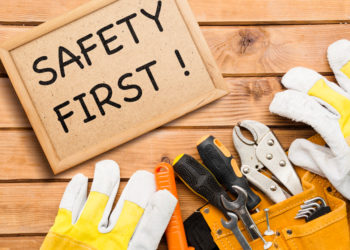In the race toward same-day delivery, every minute counts. Modern logistics operators are ditching their manual systems towards parcel sorting automation to move, route and process shipments reliably and much faster. By implementing intelligent systems into the workflow, warehouses and distribution centers can commit to tighter service windows, reduce errors, and boost output.
The Pressure of Same-Day Expectations
Customer expectations have shifted. A parcel picked up in the morning must often arrive by evening. To meet that, operations can’t tolerate bottlenecks. Manual sorting, inconsistent case packing, and slow downstream handling often become the weak links. Delays at sorting hubs cascade into missed delivery slots, customer frustration, and added costs. That’s precisely why automated sorting is increasingly seen as indispensable in high-performance logistics.
Automation as an Enabler of Speed
Automation doesn’t simply replace manual effort – it redefines how parcels flow. Here’s how key elements transform operations:
Conveyor Sorting Systems: The Backbone of Flow
At the heart of parcel sorting infrastructure are conveyor sorting systems. These systems move parcels through scanning, weighing, tagging and reliably onward to diverters or chutes. A well-tuned, personalized conveyor sortation network balances speed and reliability to ensure parcels never stall. For example, Peruza’s wide range parcel sorting line handles parcels from 0.1 to 30 kg on one continuous flow.
Automation of Case Packing and Batching
Once parcels are sorted by destination or route, many operations require grouping or packing them into cartons or trays. Case packing machines allow automatic placement of items into boxed units ready for delivery. A batching system can group parcels into delivery waves or route batches, aligning themselves to courier load plans. This pairing of sorting and packing avoids idle time, matching throughput to delivery windows.
Depalletizer Integration for Inbound Efficiency
High-volume warehouses often begin with palletized goods. An automatic depalletizer removes parcels or cartons from pallets and intelligently feeds them directly into the parcel sorting line. Depalletizers and sorting work hand in hand, ensuring that inbound goods begin their journey properly, without unreliable manual unpacking or annoying staging delays.
The Workflow in Practice
Consider a same-day fulfillment center with Peruza’s sorting architecture:
Inbound arrival & depalletizing: Pallets of parcels are fed into an automatic depalletizer, unpacked, and transferred directly to a conveyor.
Infeed & scanning: Parcels move into the sorting system. Each parcel is weighed, scanned (barcode/RFID/imaging), and assigned a route.
Diverter routing: Conveyor sorting systems divert parcels to the appropriate lane or chute per destination or delivery wave.
Batching & case packing: Parcels for specific courier routes are grouped (batched) and packed into cases if needed.
Dispatch & handoff: Final sorted parcels leave the system ready for loading into delivery vehicles—all within the same day.
This end-to-end automation minimizes manual touchpoints and ensures consistent, traceable flow from receipt to dispatch.
Benefits: Why Automation Unlocks Same-Day Reliability
Automation in parcel sorting gives operators a set of clear, measurable gains.
Higher throughput
Automated lines are built to move large volumes at a steady pace. Thousands of parcels per hour can be processed without the slowdowns that come with manual handling.
Consistent accuracy
Vision systems, scanners, and routing software ensure parcels are directed to the right chute or lane. The risk of mis-sorts is lower, which is especially important when delivery windows are short.
Optimised use of labor
Repetitive sorting is handled by the system. Crews can be reassigned to tasks such as quality control, exception handling, or system monitoring.
Shorter cycle times
Parcels move continuously from intake through dispatch. Idle stacking and waiting are reduced, which helps meet same-day deadlines.
Room to expand
Modules for conveyors, batching, or case packing can be added to handle growth. Expansion can be done without replacing the entire line.
Operational visibility
Weight, size, and routing data are captured in real time. This makes it easier to balance loads, spot bottlenecks, and plan maintenance.
A practical reference is Peruza’s wide-range parcel sorting line. It processes parcels from 0.1 to 30 kg, connects directly to warehouse management systems, and provides continuous data for operators.
Design Considerations & Implementation Tips
To make parcel sorting automation deliver reliably for same-day goals, operators should keep in mind:
Match capacity to peak loads: Build the system around your busiest delivery windows, not average load.
Buffer and bypass paths: Include bypass lanes or overflow buffers so exceptions don’t block the main flow.
Modular architecture: Use modular conveyor and sorter building blocks so you can expand in increments.
Robust maintenance access: Components (diverters, scanners, actuators) must be reachable for fast service.
Seamless integration with WMS/ERP systems: Routing decisions, batch logic, and exceptions should flow from your software.
Testing of edge cases: Parcel shapes, sizes, over-size items, or fragile goods should be given special routes or handling.
Return on investment (ROI) planning: Include labor savings, reduced errors, faster delivery, and scalability. Peruza emphasizes ROI in intralogistics investments as justification for automation upgrades.
The Role of Automation in Delivery Success
In logistics, speed without control is chaos. Parcel sorting automation offers both. By combining conveyor sorting systems, case packing machines, batching systems, and depalletizers, logistics operators can build a high-velocity system that keeps pace with consumer expectations. These technologies together streamline the flow of goods, reduce friction, and support reliable delivery windows.
In essence, to succeed in same-day delivery, the infrastructure must be aligned with the time constraints – not just in transport, but from parcel intake all the way through sorting and dispatch.
Let advanced automation lead the flow – because when every minute counts, parcel sorting must be both fast and faultless.











































































